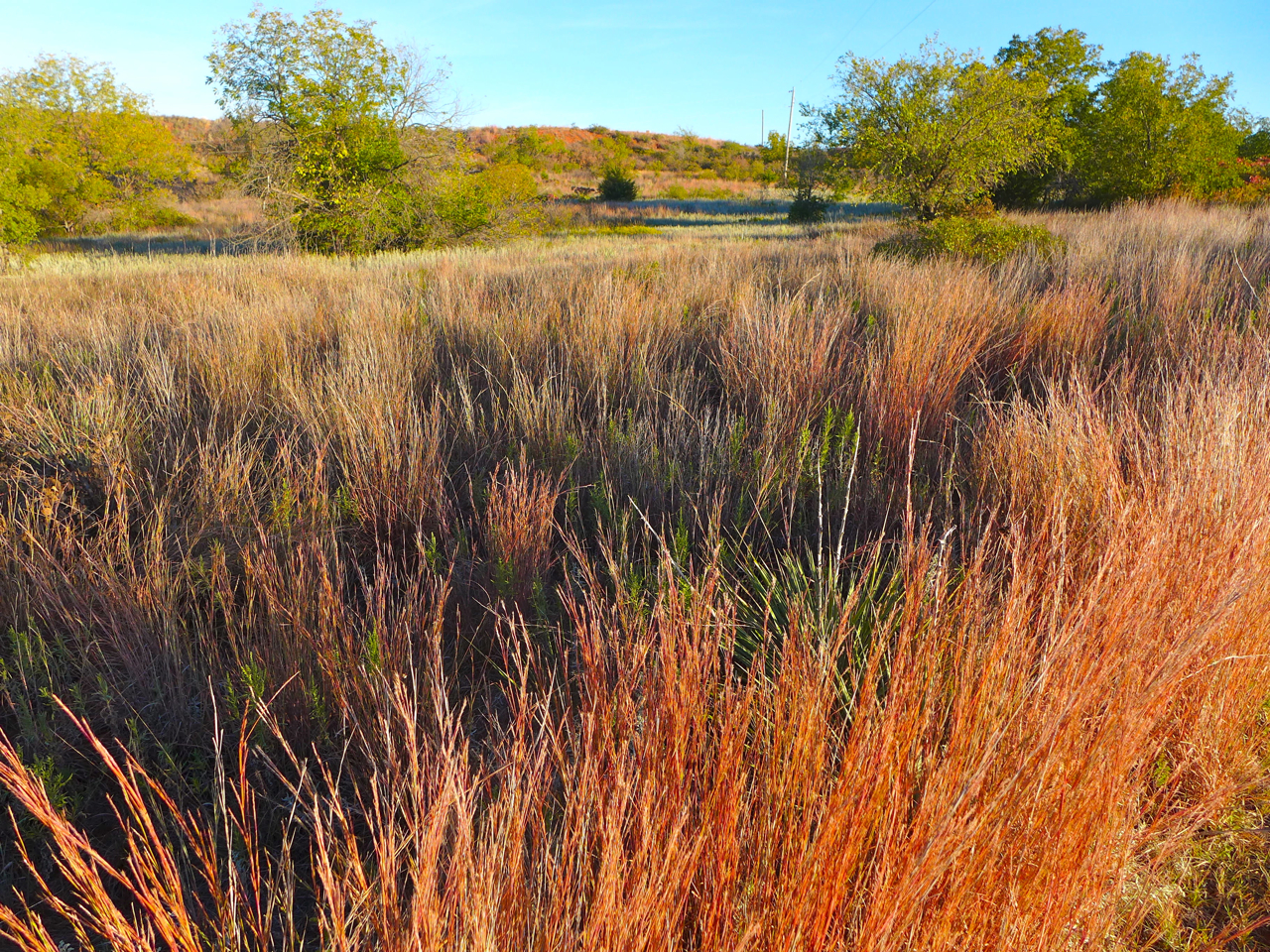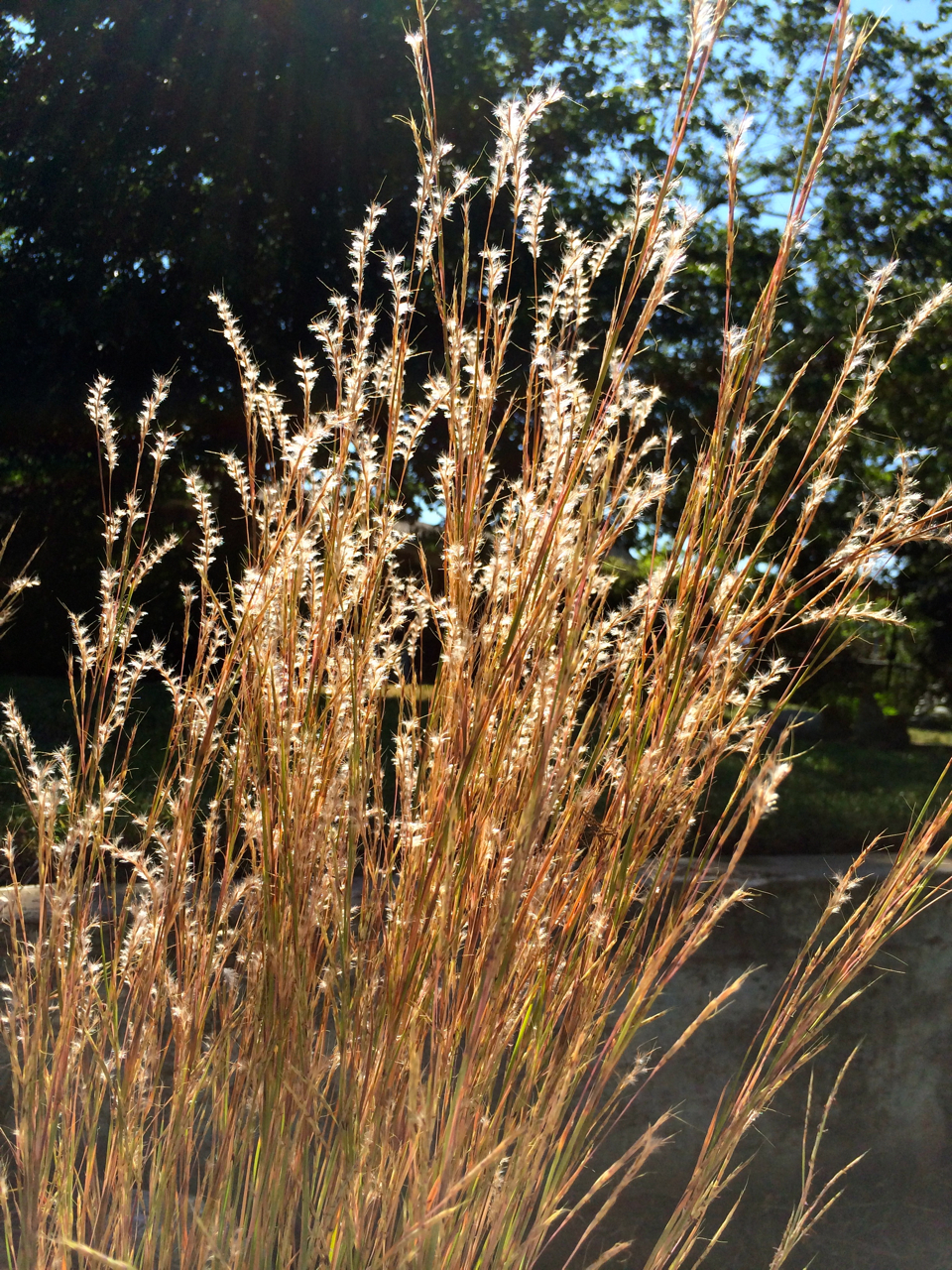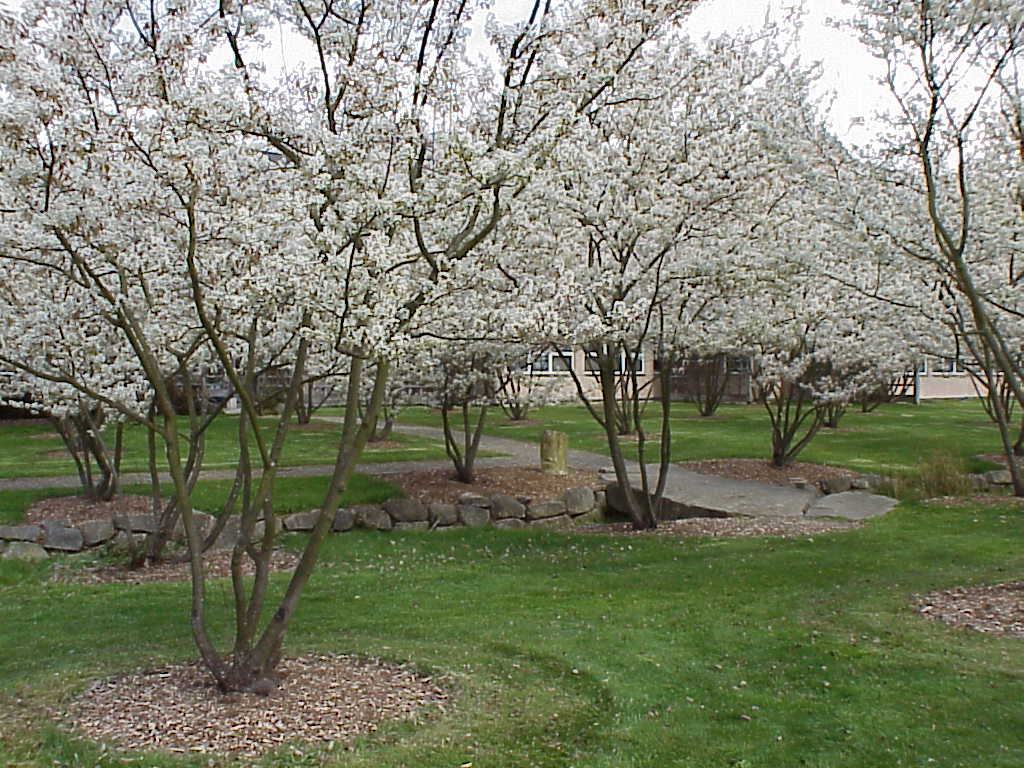Type: Perennial Bunchgrass
Height: 1 to 4 ft. (average height 3 ft.)
Spread: 1-2 ft.
Origin: Much of the U.S. including most Oklahoma counties
Exposure: Full Sun to Part Sun
Water: Medium to dry. Can tolerate some wetness
Edible: n/a
Medicinal: Used as a switch in sweat lodge ceremonies
Companions: Echinacea (pallida, angustifolia, purpurea), Agastache, Baptisia, Pinus mugo, and Perovskia, Yucca glauca
Notes: Few plants are as integral a part of the aesthetics of the Great Plains (and Oklahoma) as Little Bluestem. This grass is an essential component of prairie ecosystems and should be an essential ornamental grass in every landscape. Not many ornamental grasses, (native or otherwise) have the characteristics of beautiful year round color/form and also such a graceful appearance that doesn’t overwhelm spaces. It’s unique attractiveness embodies a wonderful balance between tough ruggedness and delicate elegance.
Little Bluestem grows in dense clusters, and is a warm season species that thrives on the sun and likes well-drained soil. It is very heat and drought tolerant and does well in a variety of situations. It is fairly easy to grow from seed but seedlings are often slow to get established. There is a great range of diversity in this plant but the colors generally range from shades of red, purple, greens, blue, copper and gold (often all of these colors are present in one plant throughout the seasons.) The color changes throughout the season give year round interest.
We use little bluestem in mass or scattered throughout sunny perennial beds. It’s makes an excellent background for showy perennials and ground covers. It’s color and form provide a wonderful sense of movement and dynamics to a landscape, and it plays nicely with perennials, shrubs and other grasses.
Many Little Bluestem cultivars and selections have been released both for forage value and as “improved” landscaping varieties. Some of our favorites include ‘The Blues’, ‘Praire Blues’ and ‘Blaze’. ‘Cimmaron’ is a native Oklahoma selection from the 70’s that is harder to find but a good choice for our region. Although we generally like to avoid patented plants there are a few new patented Little Bluestems that offer very unique color and growth habits including ‘Smoke Signal’, ‘Twilight Zone’ and ‘Prairie Munchkin’. If you venture out into most rural areas of Oklahoma chances are that you will see a wide variety of local specimens that have interesting and unique traits that are likely to adapt well to your landscape. These local ecotypes could be your ideal “variety”.
Little Bluestem benefits a wide diversity of wildlife both as nesting and roosting habitat as well for food in the form of it seed and as forage. It is also the host plant for a number of butterflies. As Oklahoma’s native grasses and plants become more and more rare in many of our most populated areas it is important to bring this beautiful grass back into our landscapes. With it’s combination of beauty, hardiness, versatility and ease of growth there is no reason why any Oklahoma garden should be without it.




